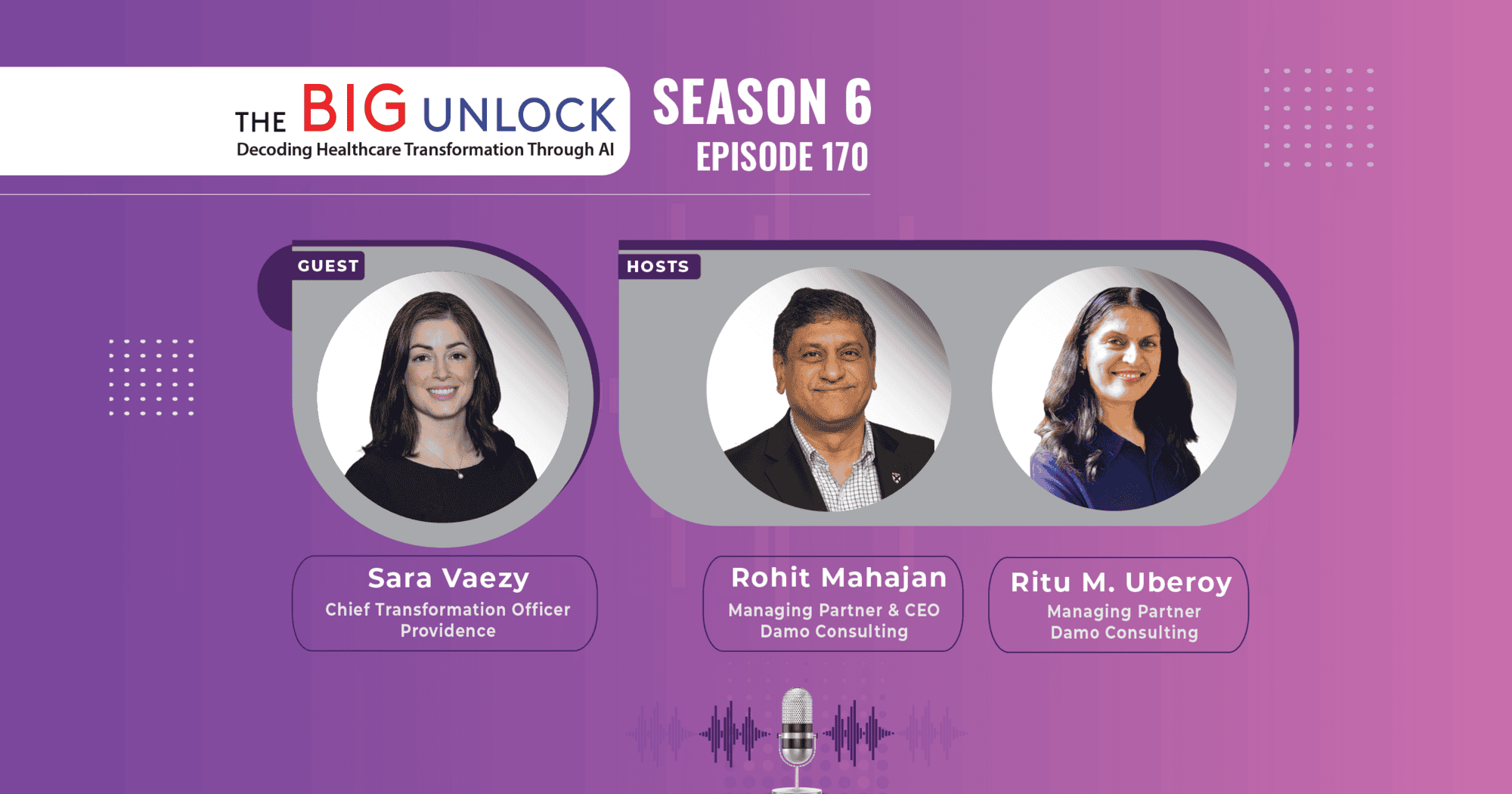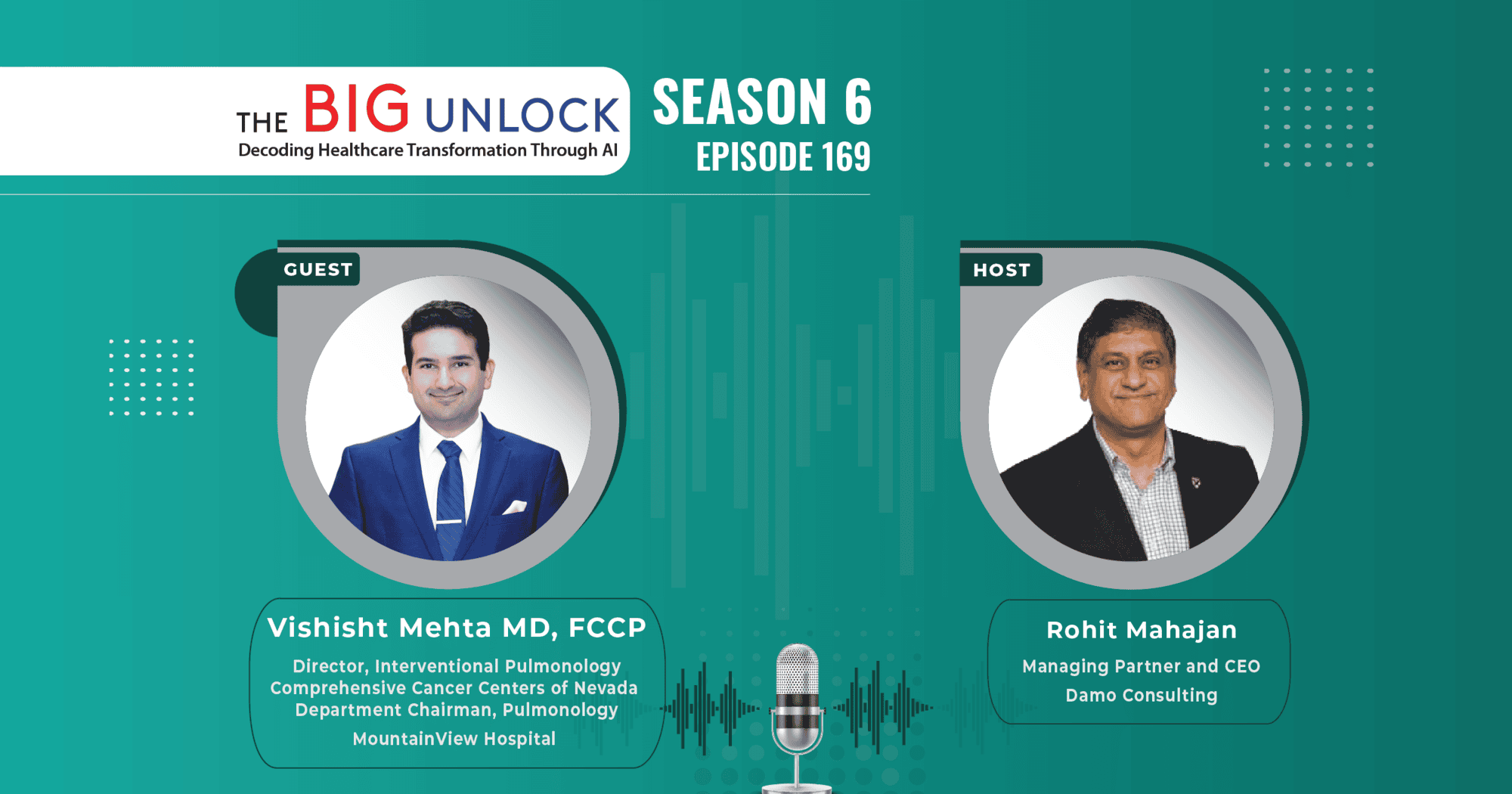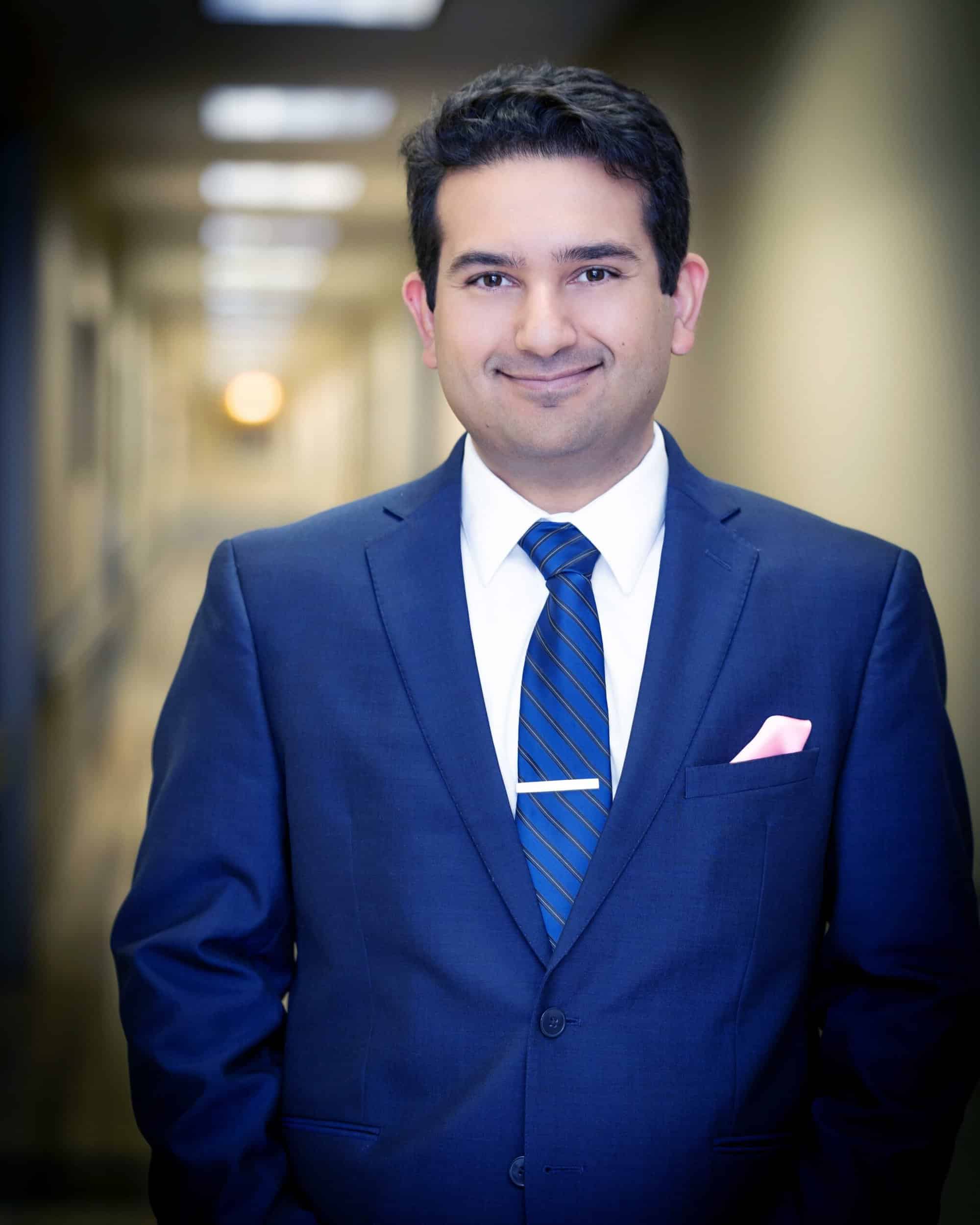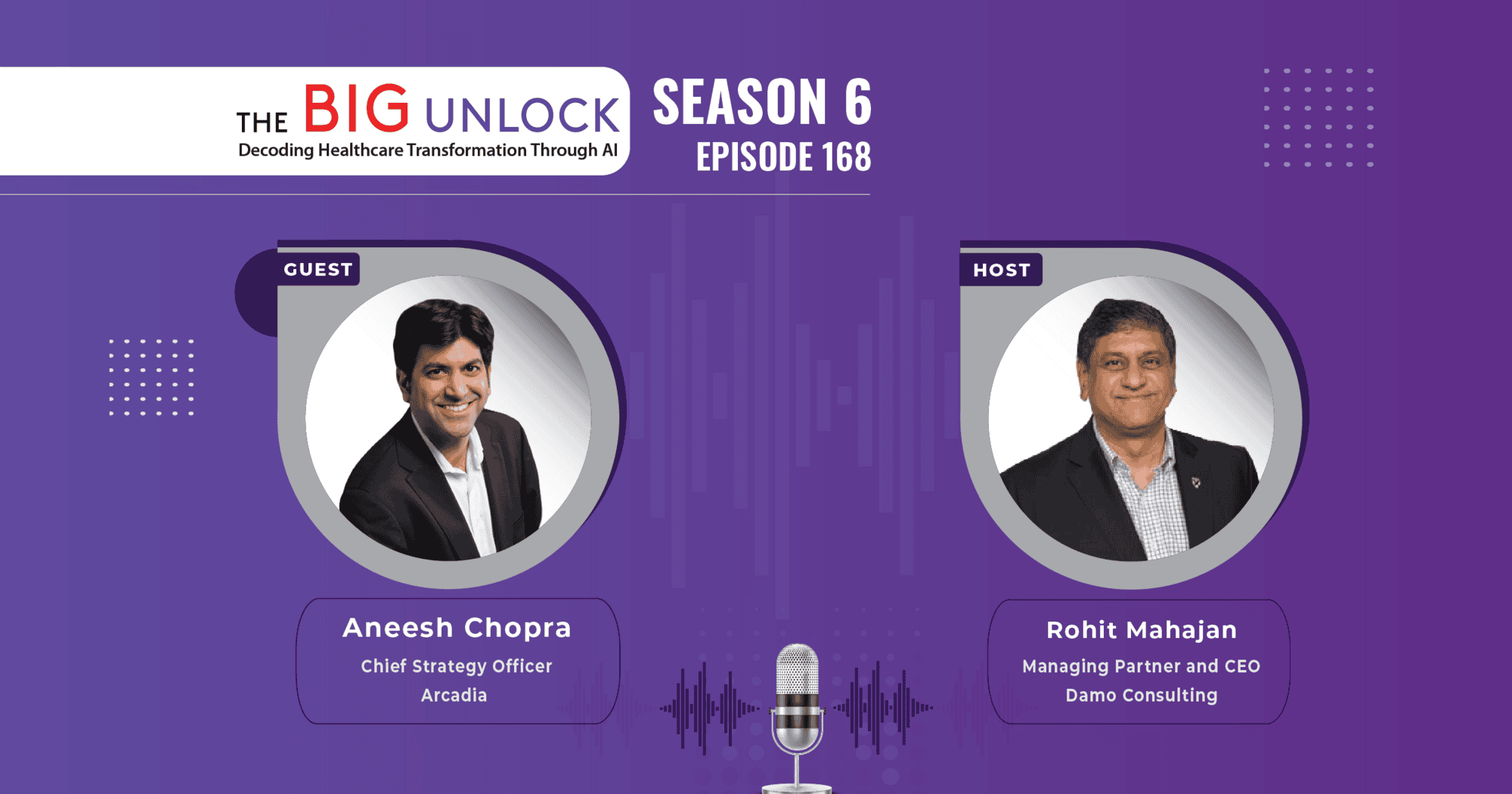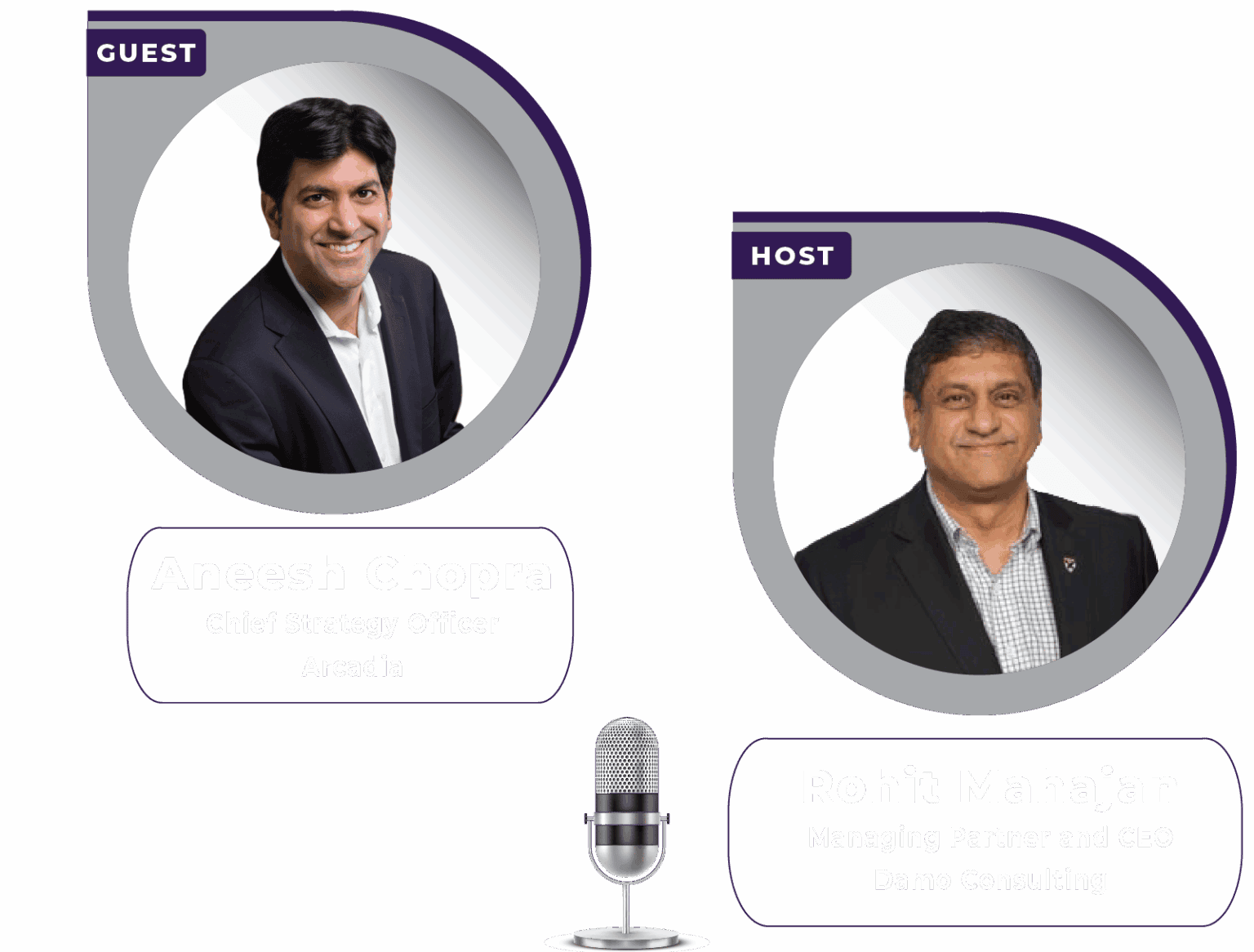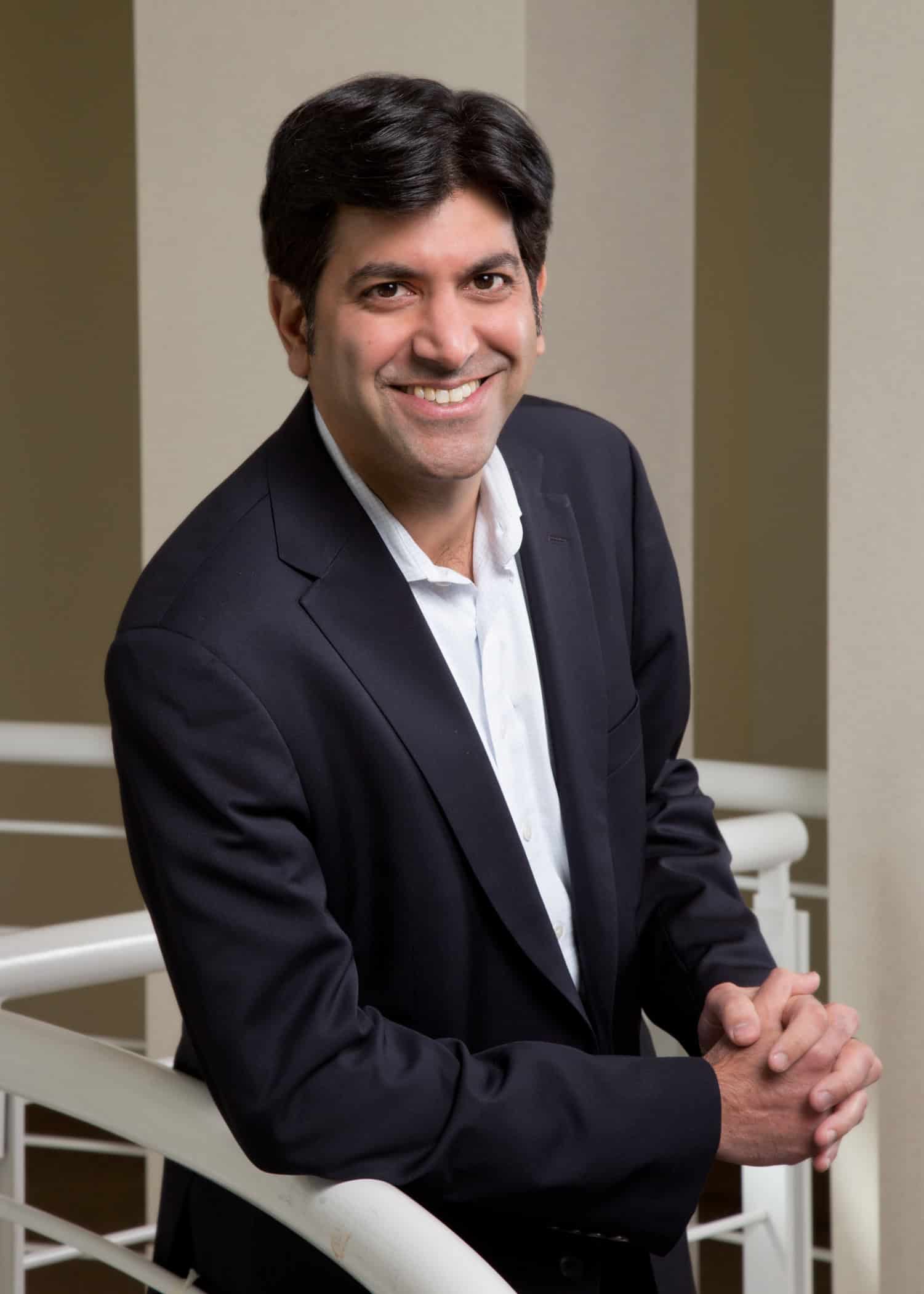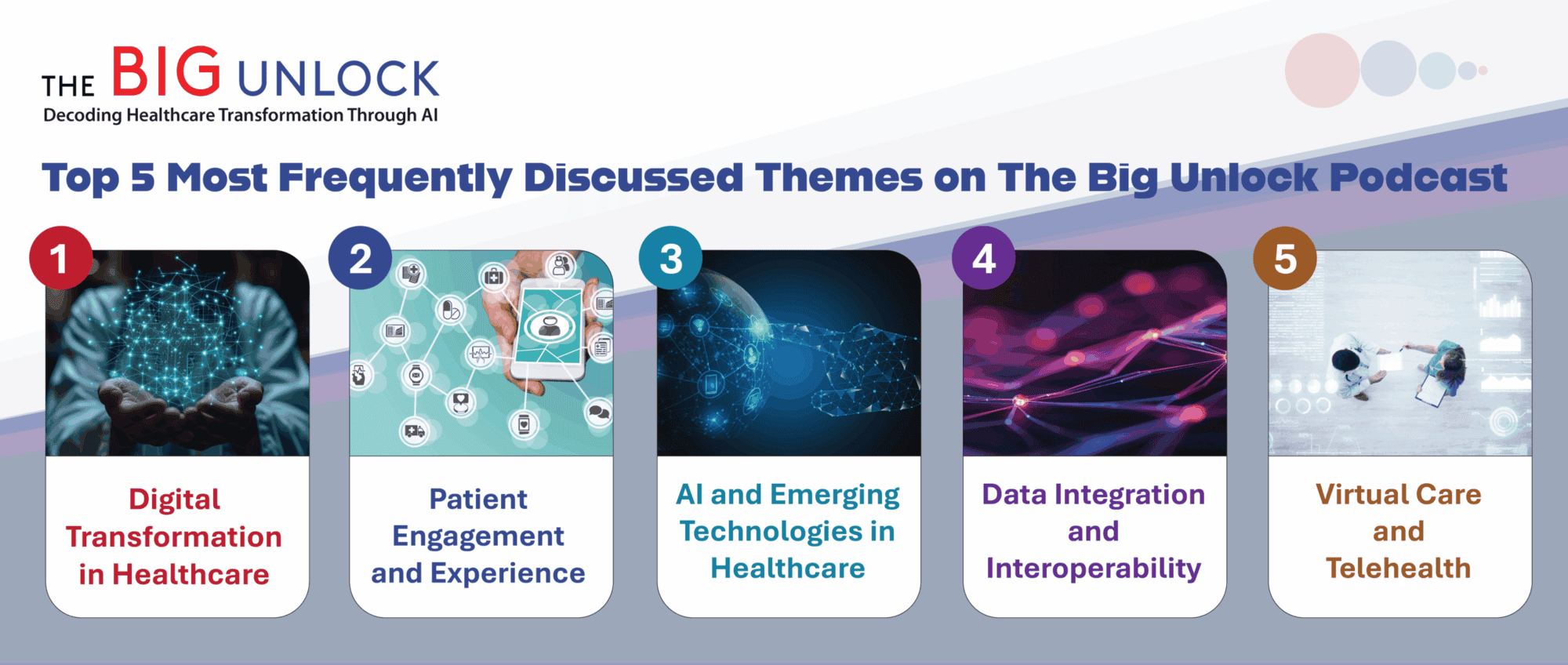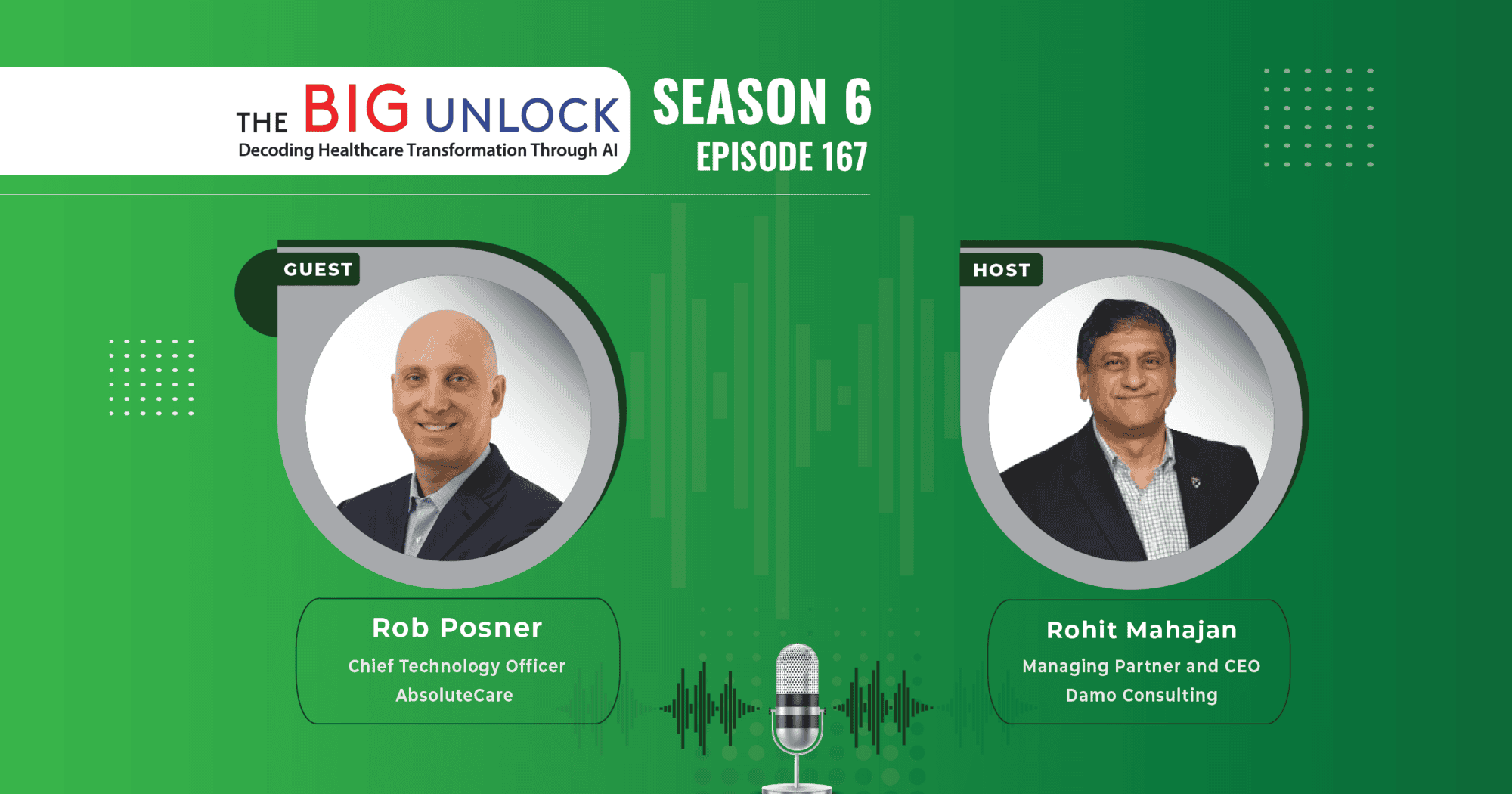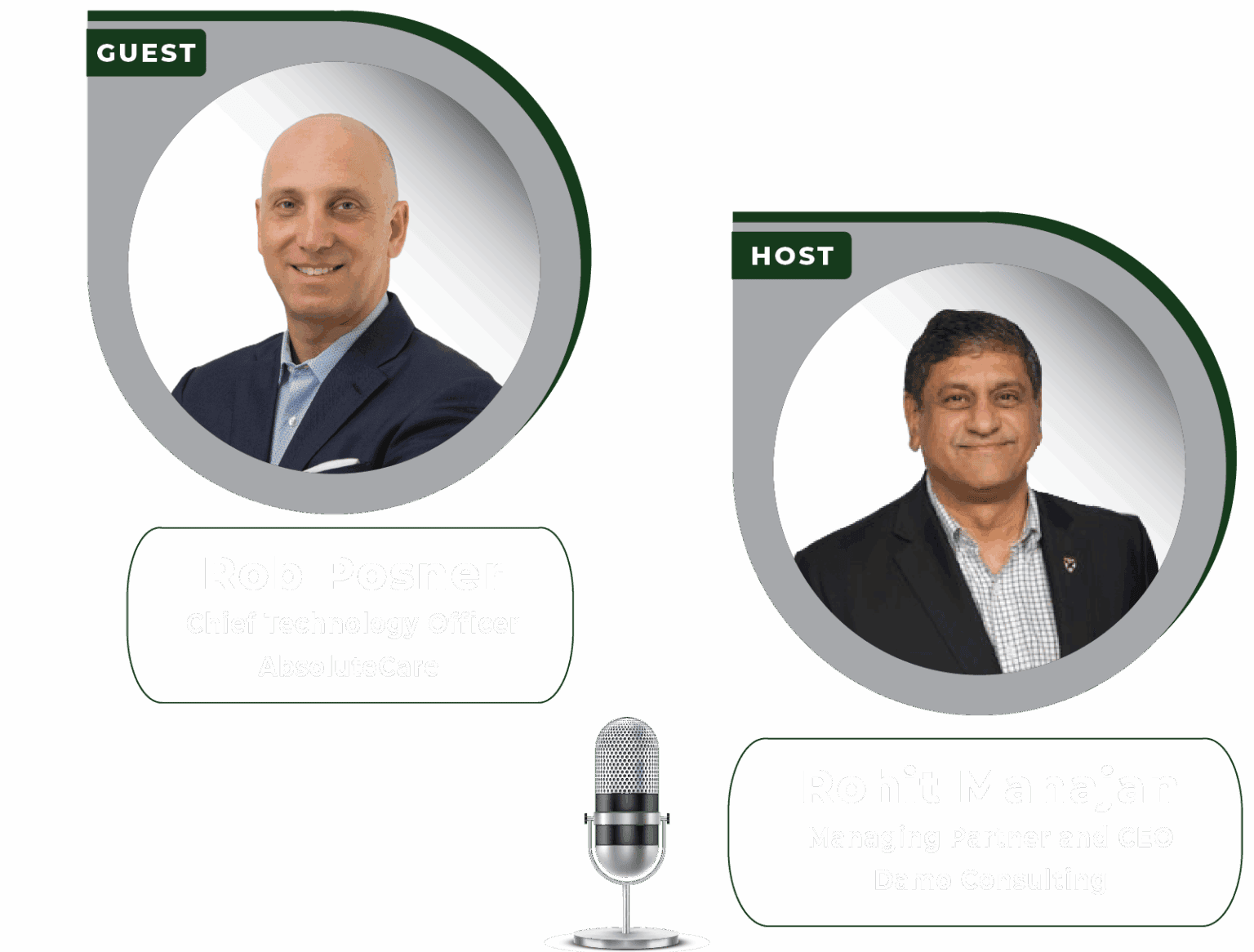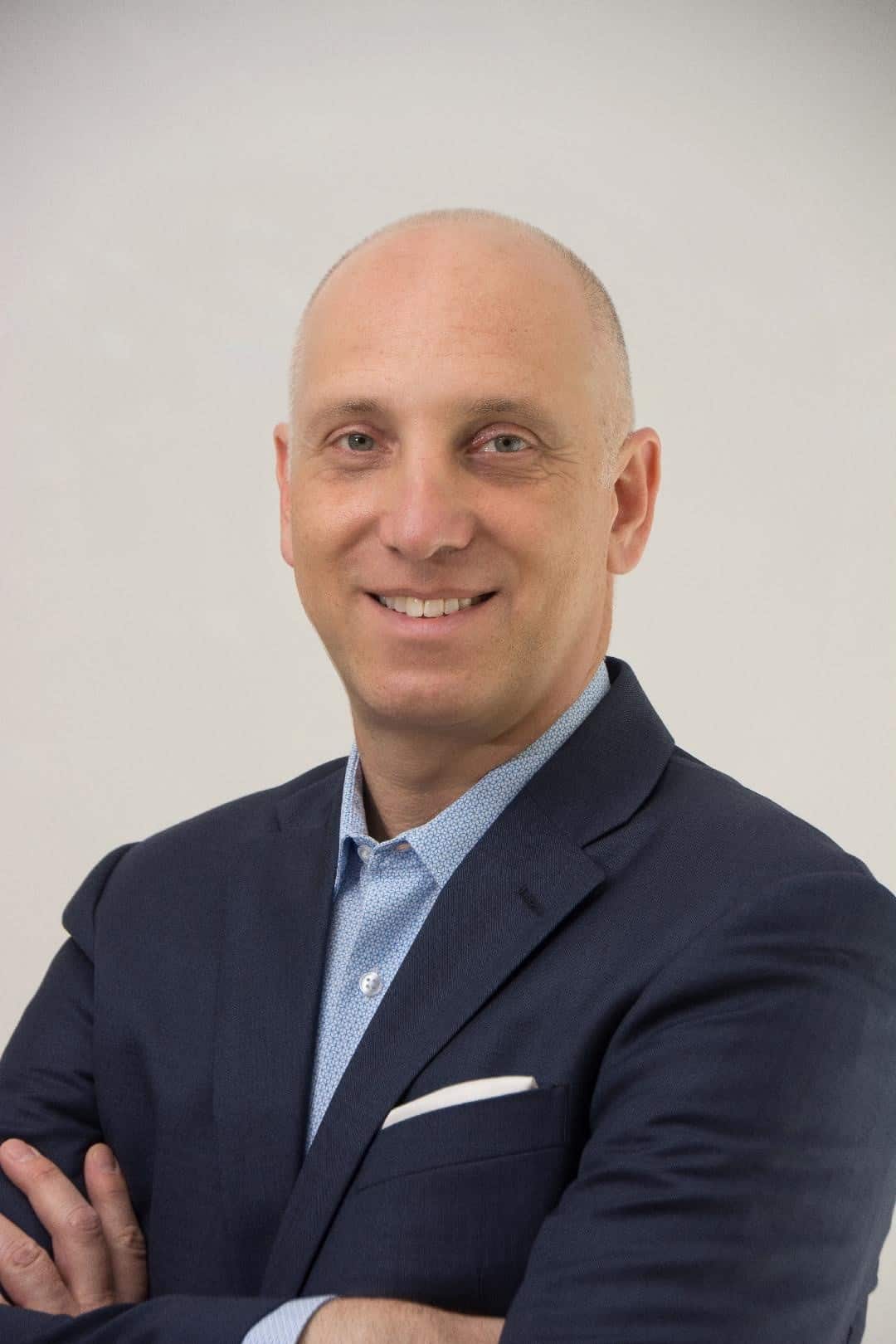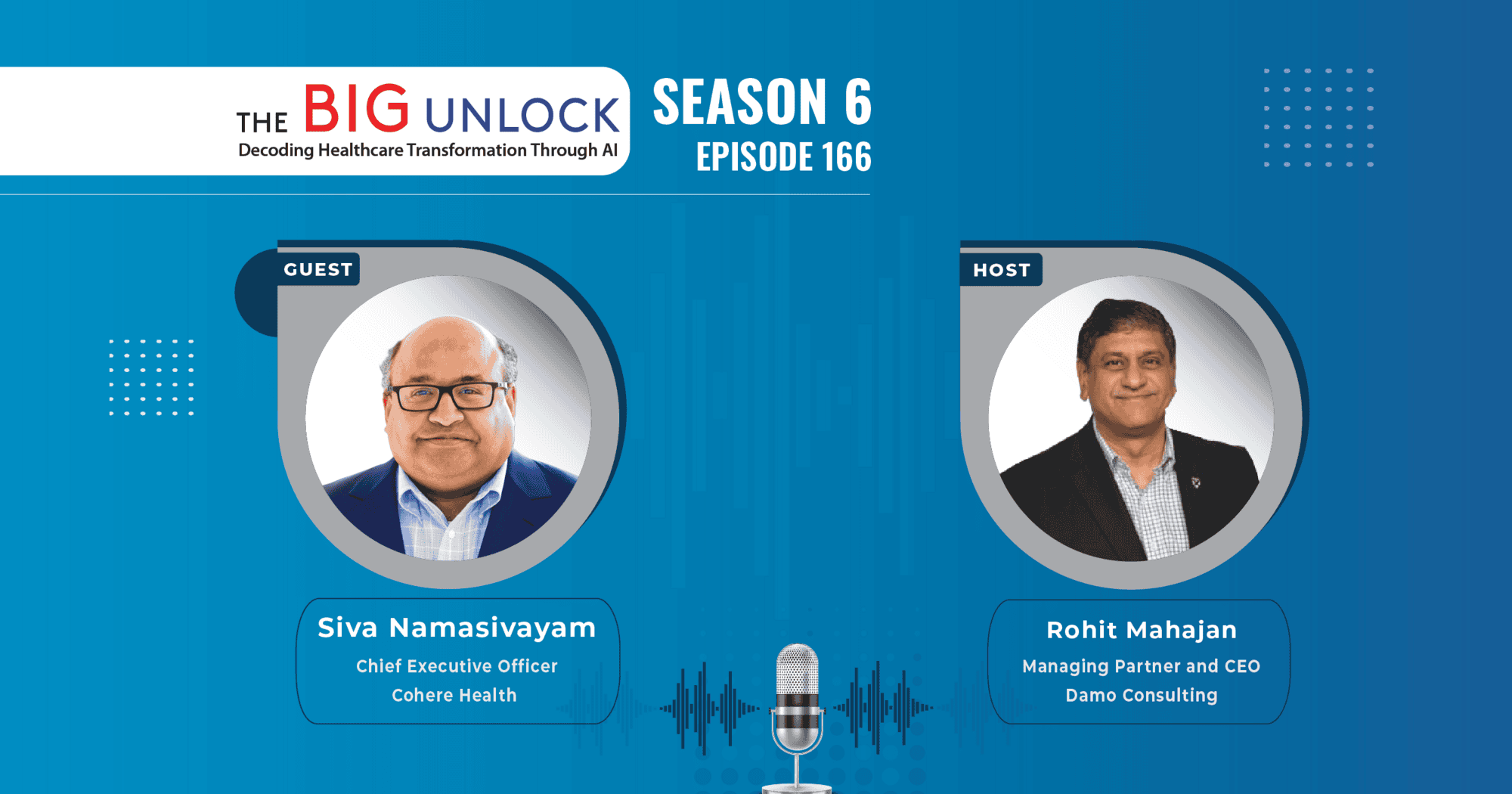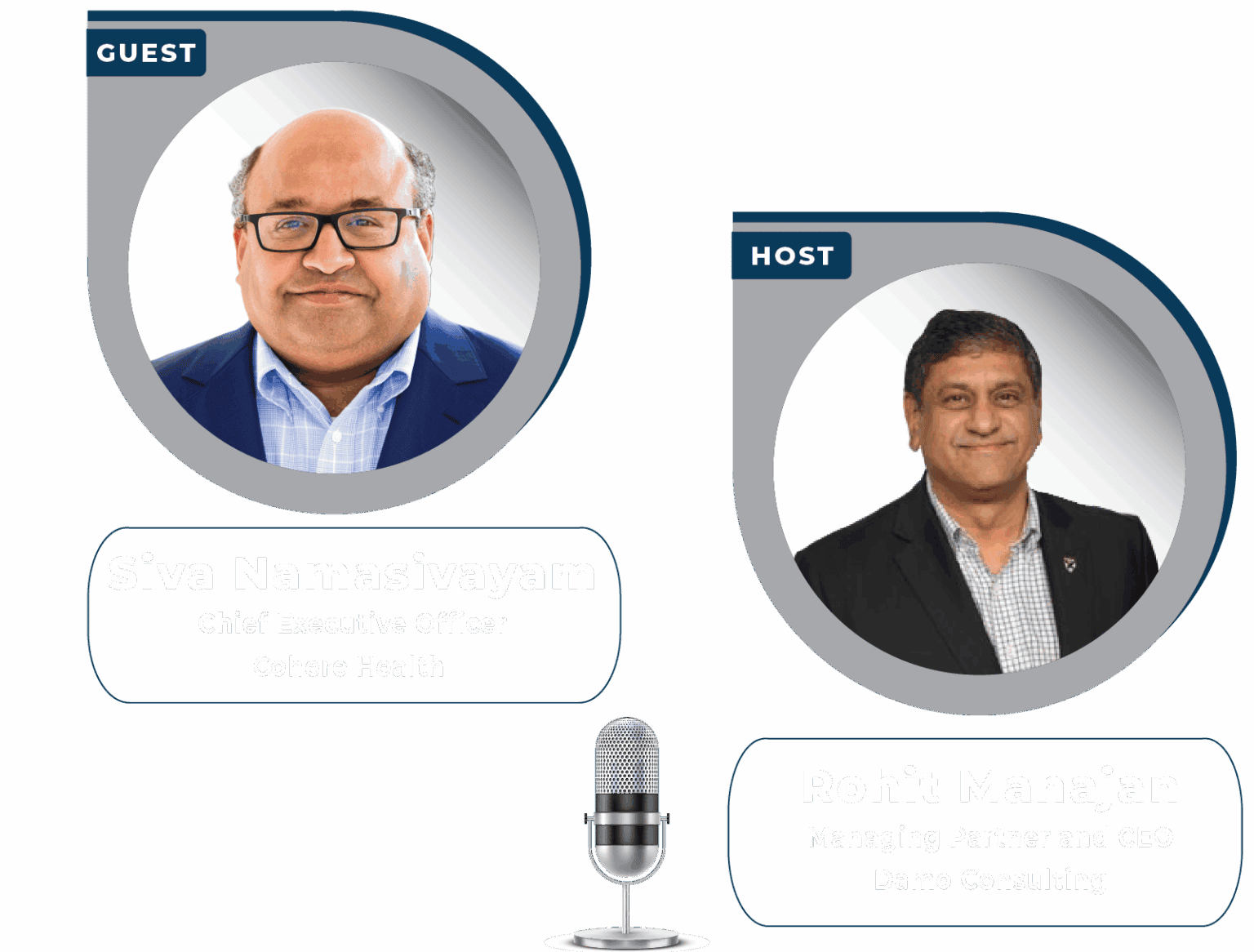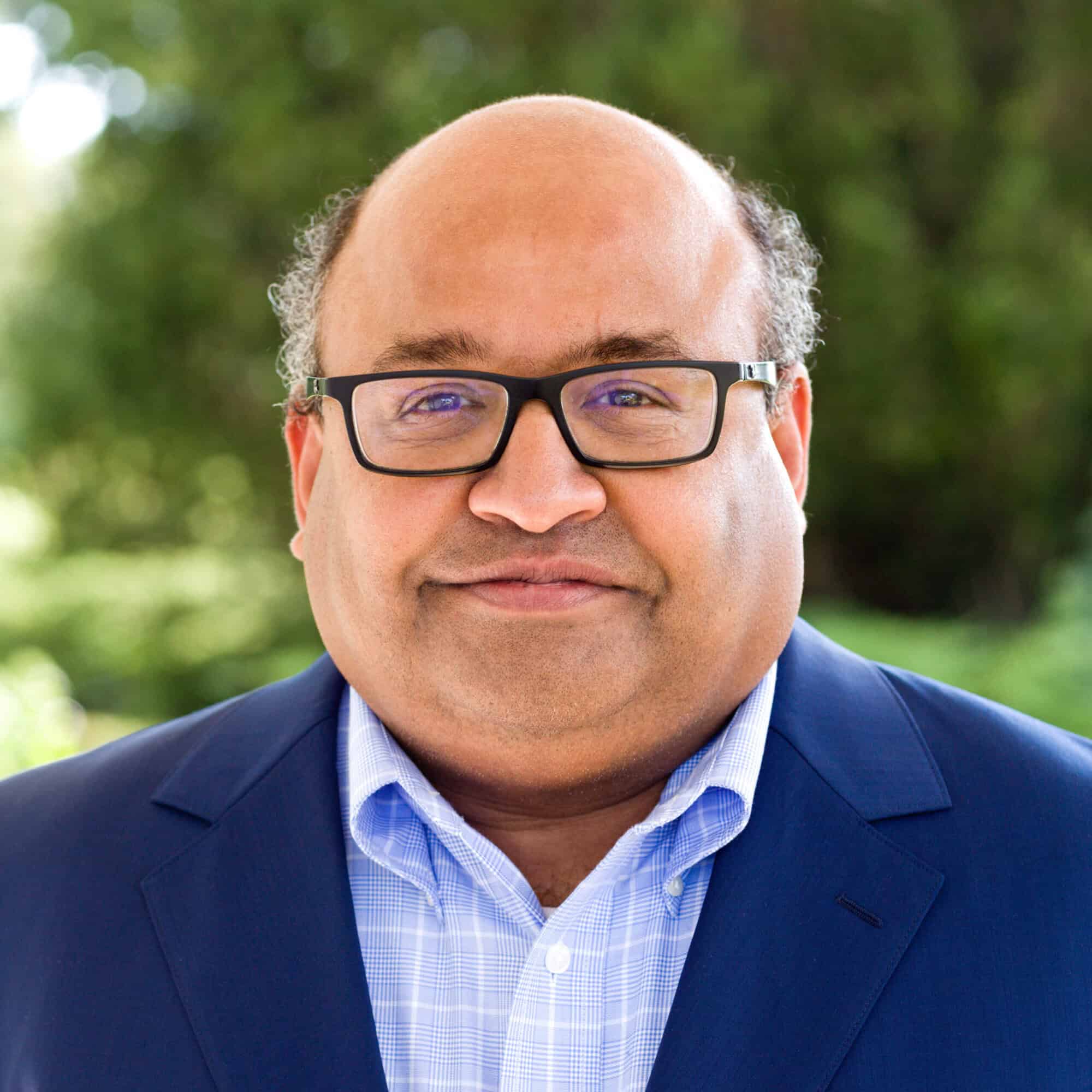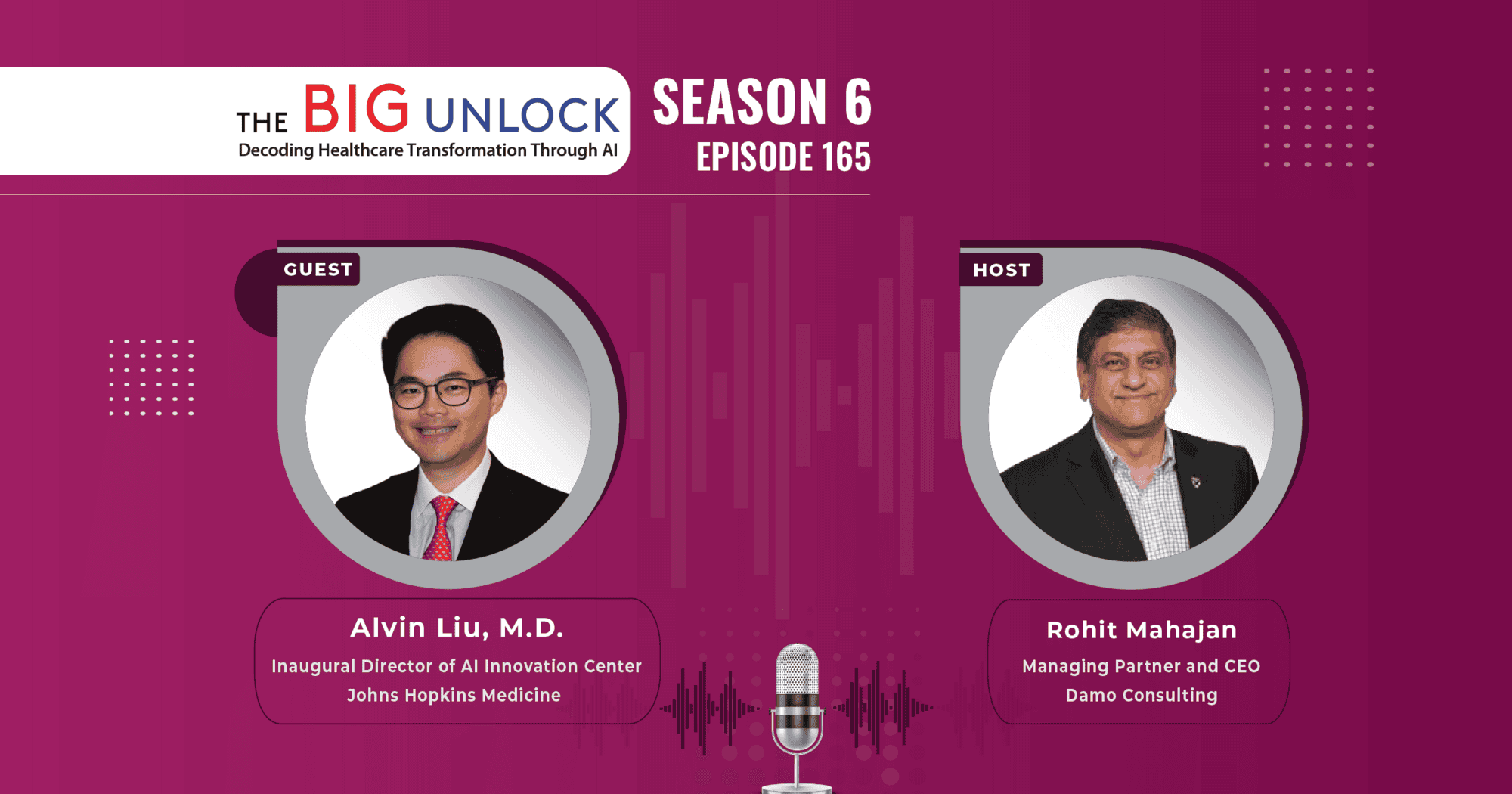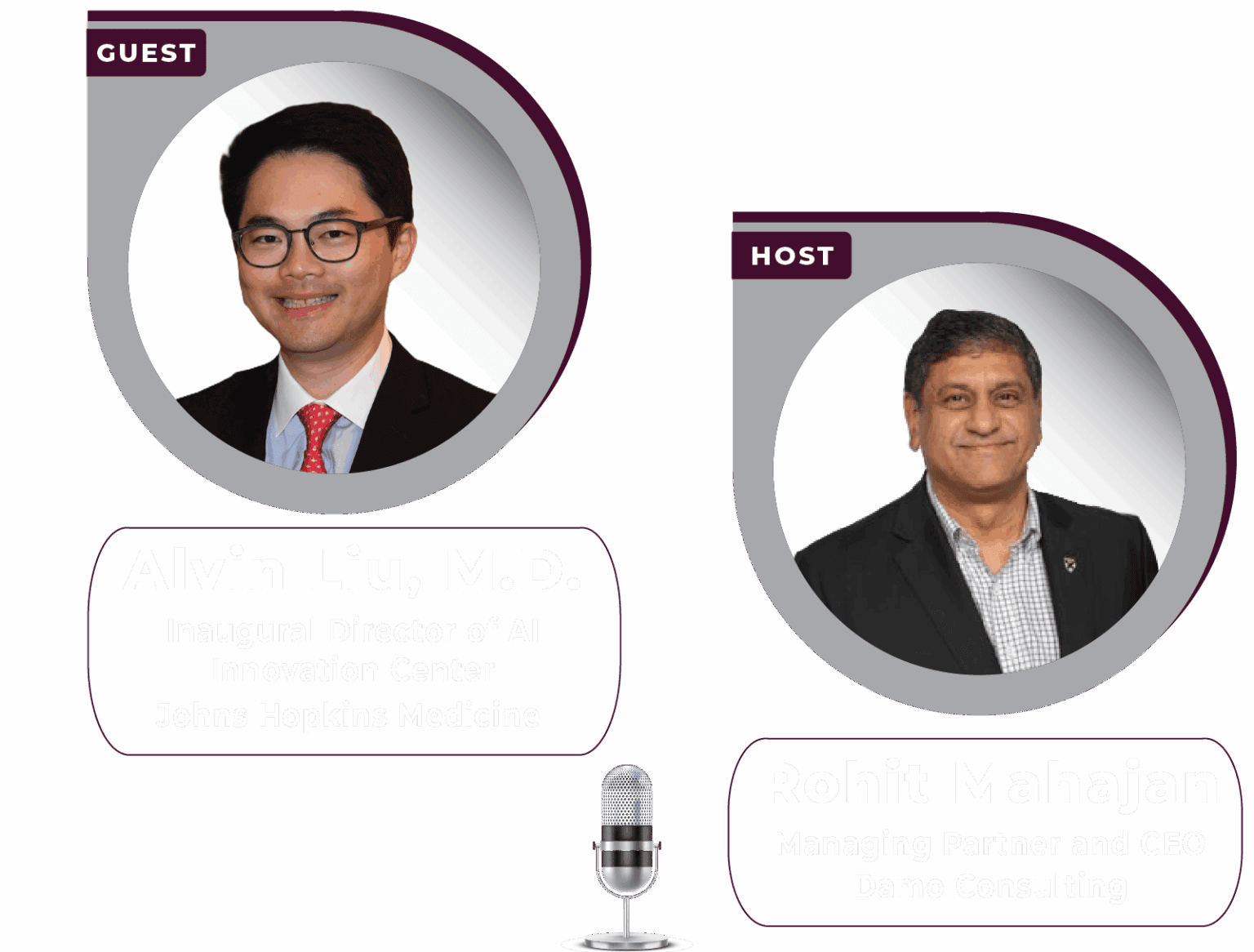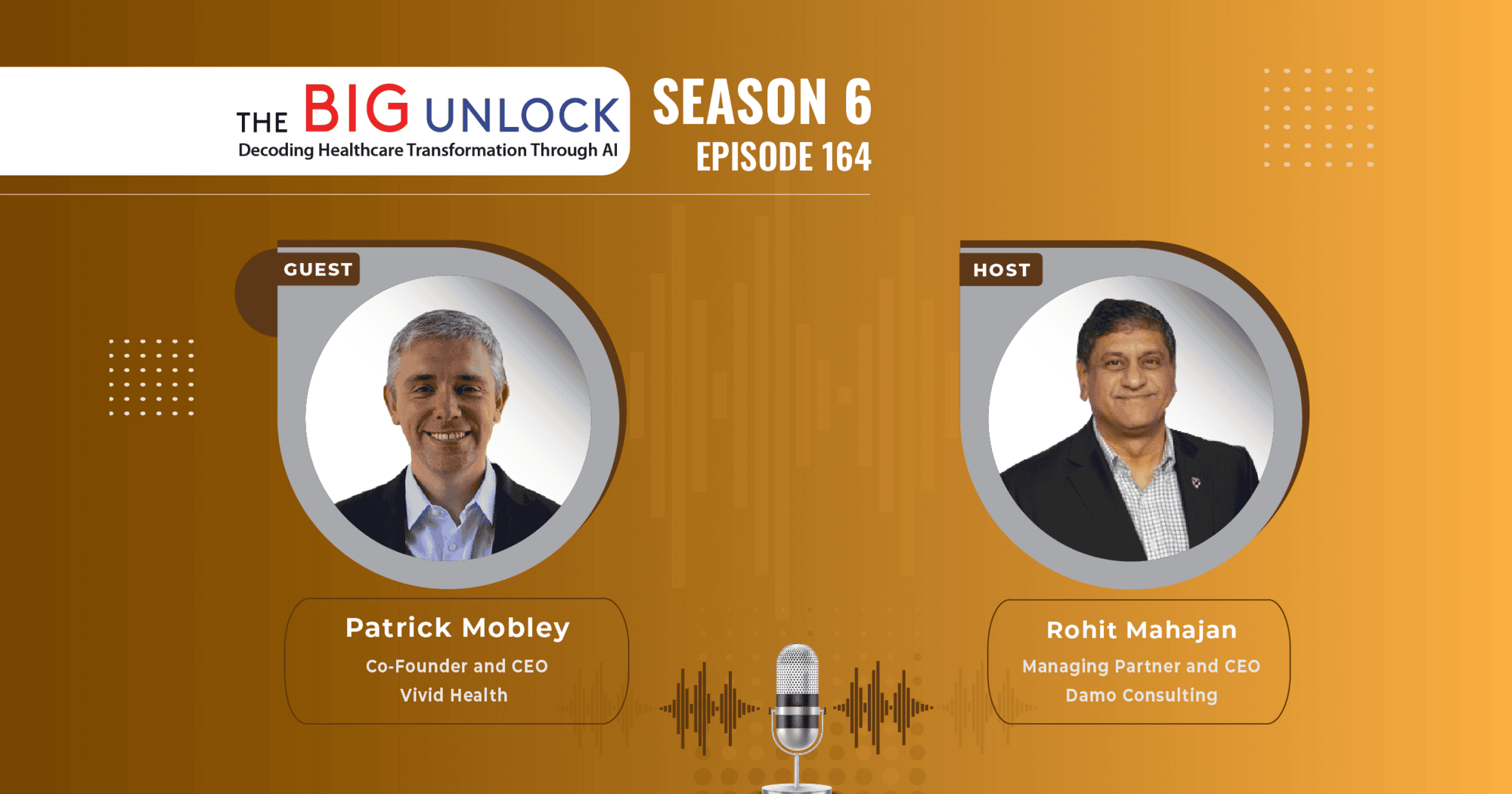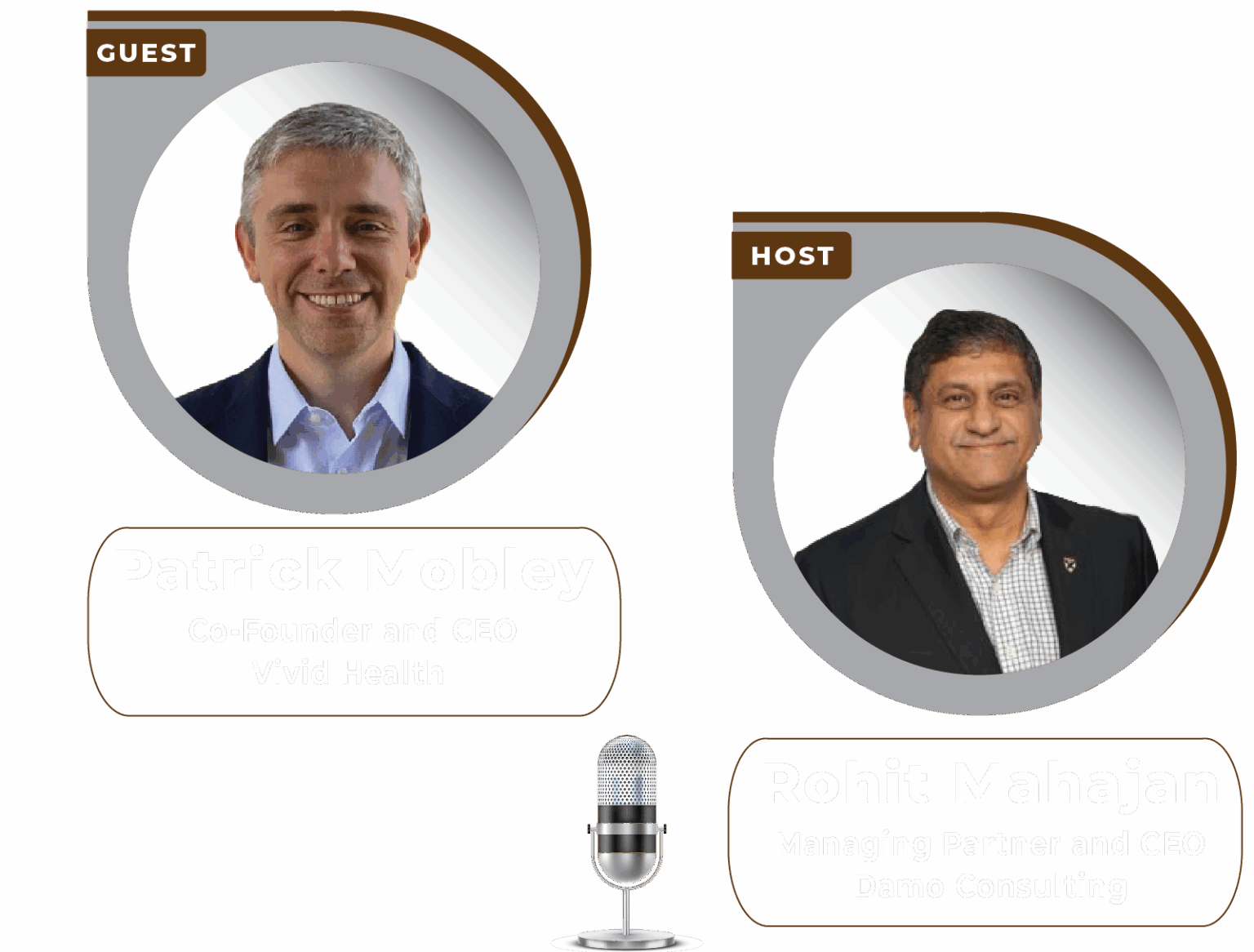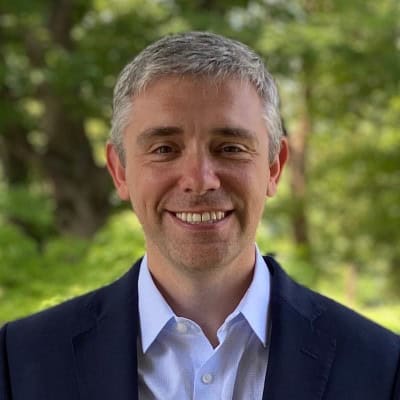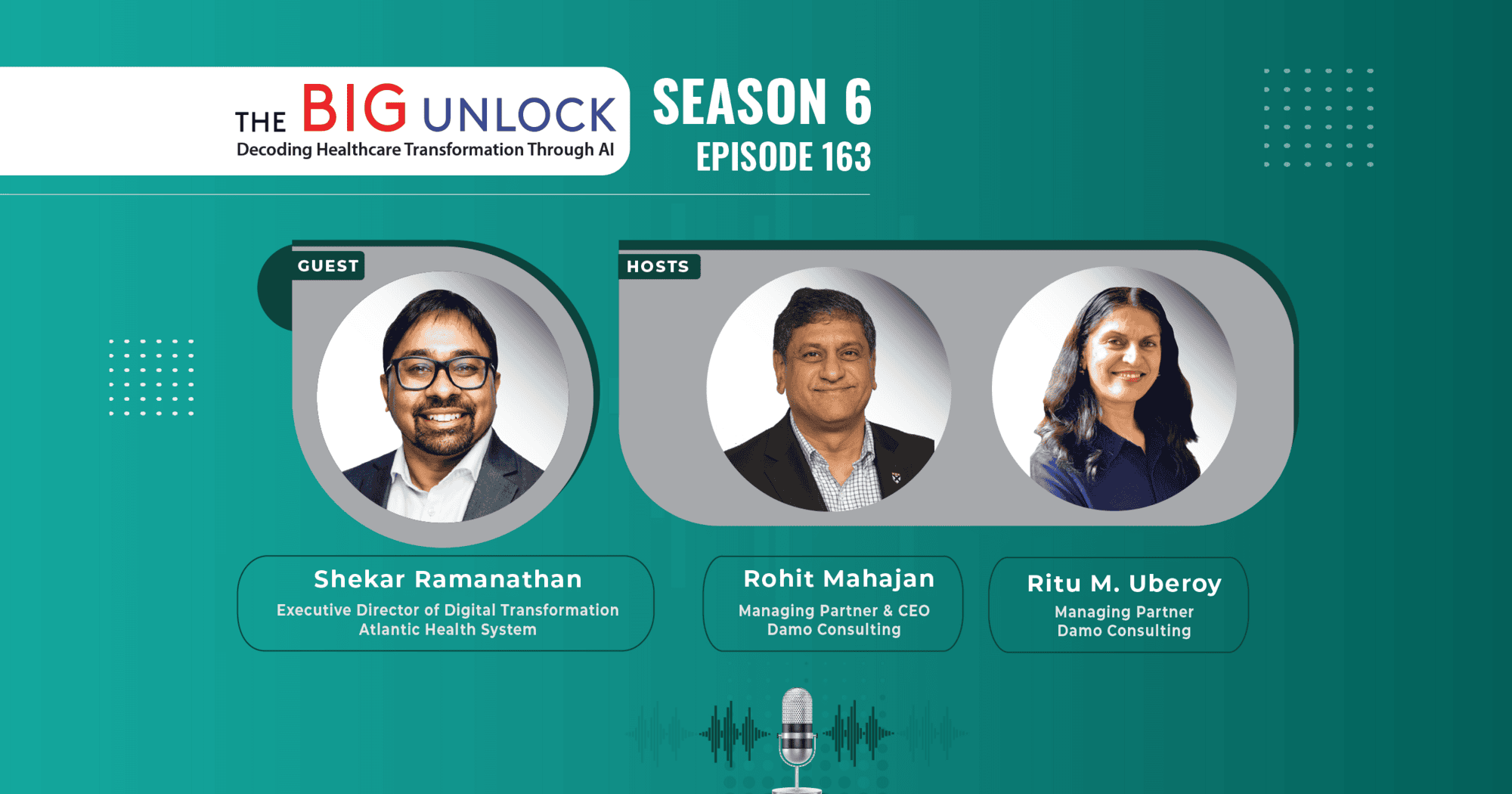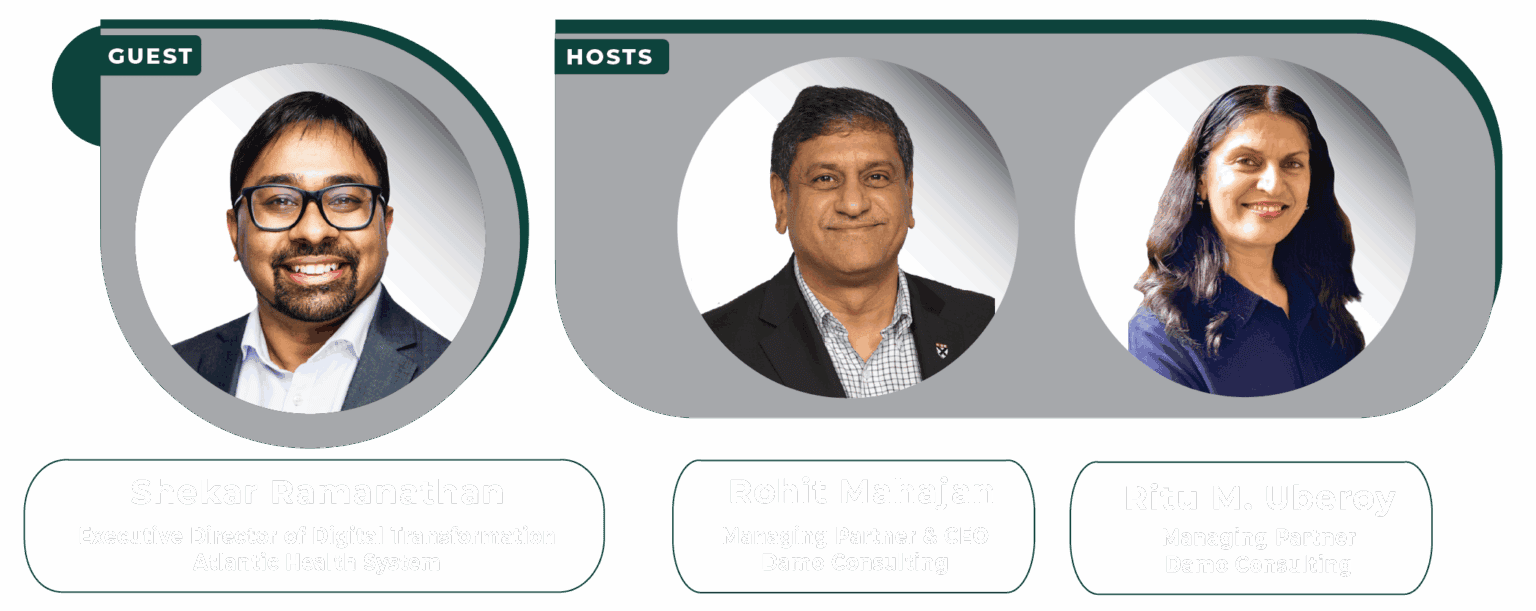Season 6: Episode #170
Podcast with Sara Vaezy, Chief Transformation Officer, Providence
Designing AI-Native Healthcare with Innovation, Automation, and Responsible AI.
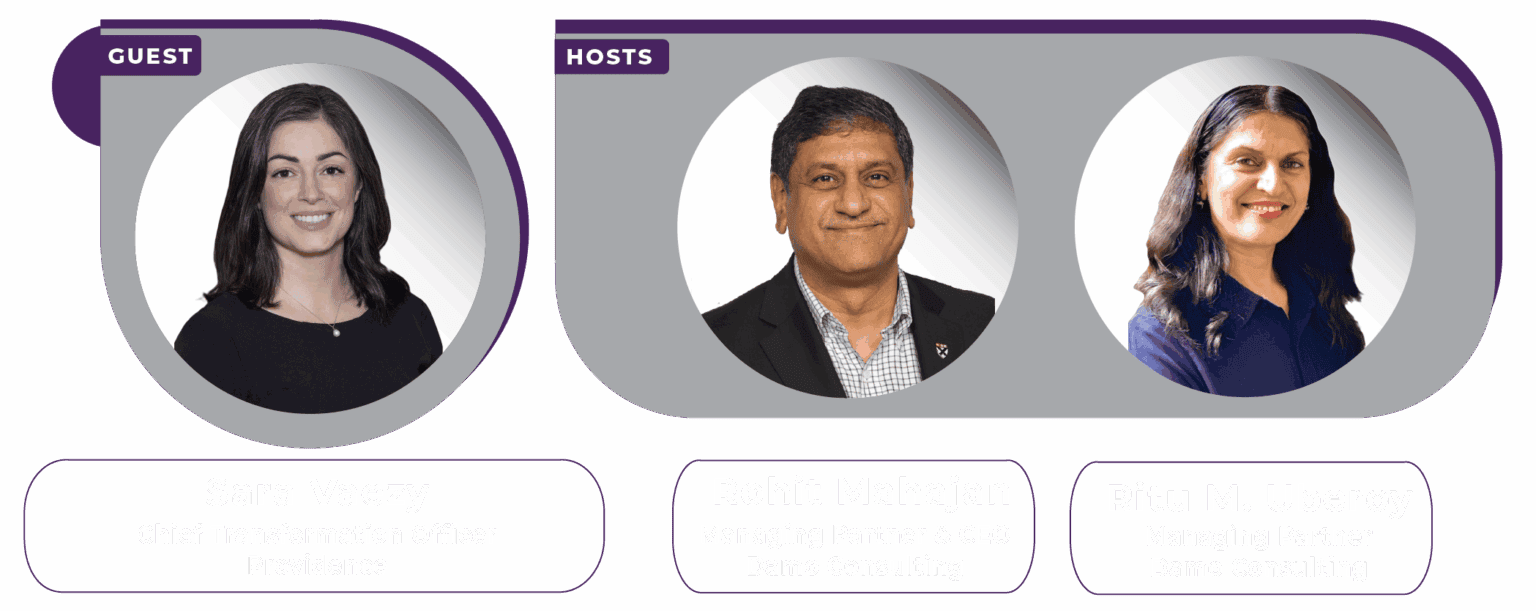
Share
In this episode, Sara Vaezy, Chief Transformation Officer at Providence, discusses Providence’s strategic approach to digital transformation, consumer engagement, and responsible AI adoption to improve both patient and caregiver experiences.
Sara highlights the importance of delivering personalized, frictionless, and proactive healthcare experiences across digital touchpoints. At Providence, a standout initiative is the use of conversational AI to enable ‘message deflection’ which reduces the volume of patient messages sent to physicians by helping patients resolve queries instantly through intelligent chatbots. Sara emphasizes building a digital workforce not just to automate routine tasks, but to rethink and redesign workflows creatively. With foundational investments in cloud infrastructure, unified data systems, and interoperability, Providence is well-positioned to scale AI use cases like ambient documentation and care navigation.
Sara also shares how Providence has incubated and spun off innovative startups like DexCare and Praia Health to address critical gaps in supply-demand matching and patient personalization. She advocates for ethical AI governance, better observability tools, and designing AI-native healthcare processes that go beyond simply replacing human tasks. Take a listen.
Video Podcast and Extracts
About Our Guest
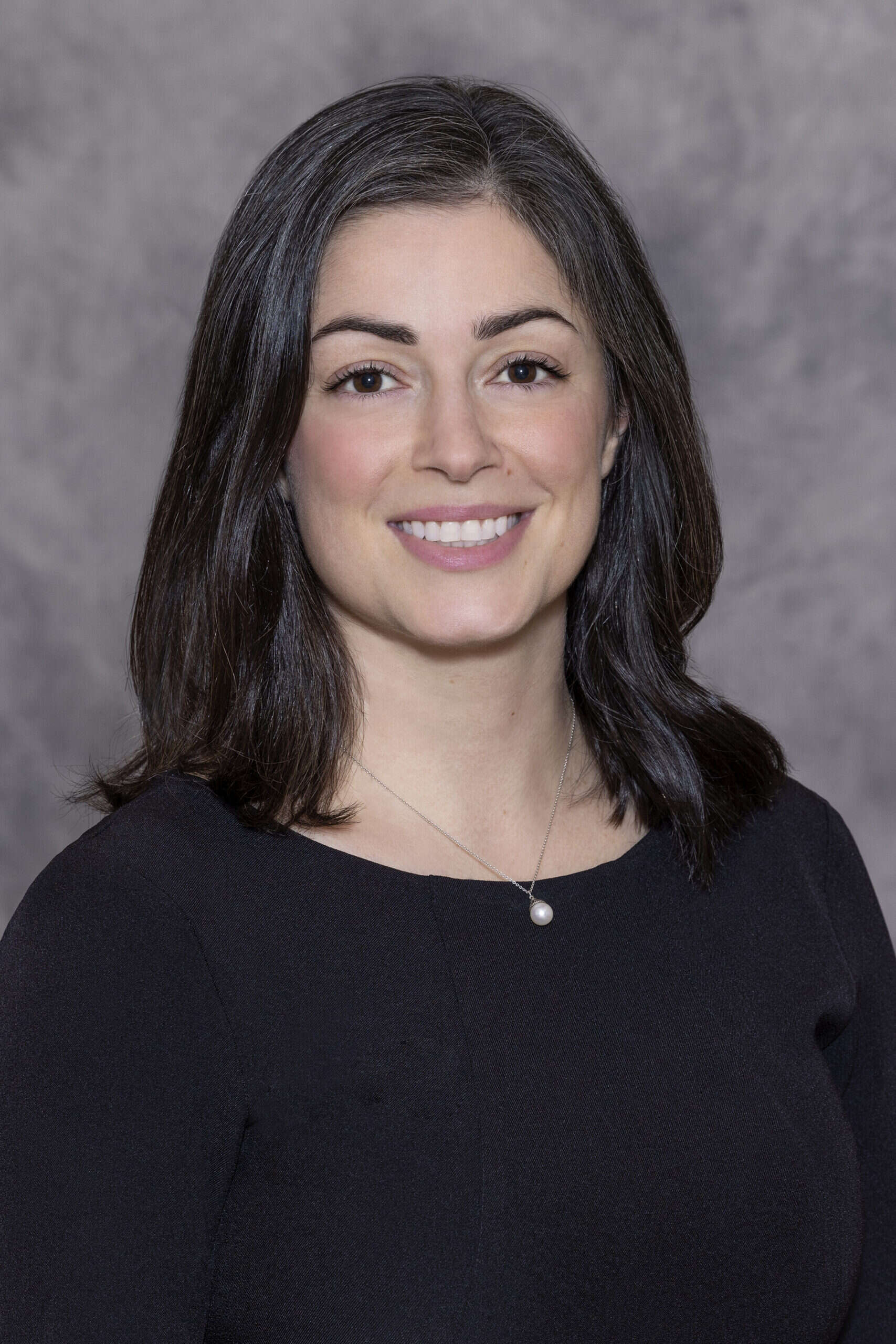
Sara Vaezy serves as chief transformation officer for Providence. She is responsible for leading the Office of Transformation, which is accountable for driving Providence’s responsible adoption of AI to enable the delivery system of the future. Additionally, she oversees marketing, brand, digital — including developing and investing in next-generation innovations and forging partnerships to scale sustainable technology solutions — and virtual care.
Prior to Providence, Sara was at The Chartis Group, advising clients on enterprise strategy, payer-provider partnership, and the development of population health companies. Sara serves as a National Committee for Quality Assurance board director, AARP Services Inc. board director, Praia Health board director, and a board observer for DexCare. She is also a Harvard Executive Education faculty member.
Sara holds dual master’s degrees in health policy and health care administration from the University of Washington and bachelor’s degrees in physics and philosophy from the University of California, Berkeley.
Recent Episodes
Rohit: Hi Sara. Welcome to the Big Unlock podcast. It is great to have you here.
Sara: Thank you so much for having me. I’m excited for the conversation.
Rohit: We are quite looking forward to it. So we will start with some very quick introductions and then dive right into the topic our audience is waiting to hear. I’m Rohit Mahajan. I’m the Managing Partner and CEO at BigRio and Damo Consulting. I will request Ritu to do the intro, and then over to you, Sara.
Ritu: Hi Sara, welcome to our Big Unlock podcast. We are thrilled to have you on the podcast and looking forward to a very insightful and engaging conversation. My name is Ritu Uberoy and I’m the Managing Partner here at BigRio and Damo Consulting, and also serve as the host for the Big Unlock podcast. I’m currently based out of Gurugram, India, and I travel frequently to the US. Really excited to have this conversation because we were in the Bay Area yesterday and every second billboard was an AI billboard—so you know this is what’s happening right now.
Sara: Absolutely. I’m so happy to be here with both of you. Just as a quick introduction for the folks who are listening—I’m Sara Vaezy. I serve as the Chief Transformation Officer at Providence, and I’ve been with Providence for about nine and a half years in total. The transformation role is relatively new for me.
I have dual responsibilities. I have responsibility for the consumer-facing, patient-facing front end for the organization. We serve 5 million patients a year. So how we do our brand, our marketing, our digital consumer experiences to really meet the needs of our communities—ensure that they can find our services, that we can bring them in, that we can retain them—that’s a big part of what we do across channels. Whether it’s web, mobile, proactive outreach, phone—all those types of connected digital experiences.
I also have in parallel this newer responsibility around transformation, which started out as a bit of a nights and weekends project back when GPT became publicly available. I had a feeling there would be a really important impact on our industry and that we needed to lean in. That morphed into a formal role around identifying and being responsible for driving AI adoption—responsible AI adoption—to get maximum value for it in our system. Do so in a way that keeps our patients safe, keeps our caregivers— we call all the folks that work at Providence caregivers—safe.
That’s been the undertaking over the last several months. We’re going to be really focused and drive it across a couple of specific domains. We’re not just going to do it spray and pray, but really focused.
That’s what I’m responsible for. I’ve been in healthcare for a long time. Prior to coming to Providence, I was in management consulting. Before that, I worked in health policy and health services research. I started out my career as a research scientist in med tech. Healthcare is something I love and is very near and dear to me. There are a whole lot of problems for us to solve. So the job is never done—and it’s a lot of fun.
Rohit: Absolutely. The landscape is changing so fast that it’s hard to keep up, but there are a lot of very interesting innovations coming our way.
So how do you think about the consumer-facing apps, and how does it make a big difference to the patient’s experience and care?
Sara: It’s an interesting question, and you’ve separated consumers and patients—we tend to do that as well. Actually, I kind of don’t like the term “consumer” either because it has the implication that you have the means to participate in the market or to buy services. That’s not really what we mean. What we mean is that each person has agency over their own healthcare, their own decisions, and we want to support that.
What we’ve really focused on is a few different things. The first is that we really need to make finding our services and transacting with us—like booking an appointment, paying your bill, getting financial assistance or counseling—a lot easier. Even things like just creating an account. A lot has changed with the electronic medical record companies too, making it easier to create accounts.
But back in the day, you needed a special code, or you needed to have a clinic visit already, and there were just lots of barriers to doing things easily. We’re really removing those barriers as much as we can—making it easy to find what you need, whether it’s a physician, content, or something else. Taking out the friction, making it easier—that’s job one.
We’ve got some pretty lofty goals. Things like online scheduling are still a battle for us. But we aim to make sure anything that is bookable has the option to be booked online. That doesn’t mean everybody will exercise that option, but it means it’s available to them. It’s just like booking a flight or hotel—there shouldn’t be secret sources of data. Everything needs to be available from the same source of truth and be frictionless.
The second piece we’re focused on is that each person is different. If we really want to keep people engaged, we need to recognize how important personalization is. I have a different experience than Rohit, who has a different experience than someone else. We live in different parts of the world. We have different healthcare needs. I have a six-year-old son who is a proxy on my account. All of these things are different. We need to deliver different experiences, and we know that makes a big difference in terms of keeping people engaged.
Rohit: Especially because you said you have 5 million patients that you’re serving. That’s such a large number. There must be so much diversity in that, and it must be spanning many different.
Sara: Exactly. Many different states. We’re up and down seven states in the Western United States—Washington, Oregon, California, Texas, New Mexico, Montana, and Alaska. Very different states. Some have big urban areas like Los Angeles and Seattle, and some are very rural, like northern Alaska. It’s a very diverse footprint—different types of services, people, and expectations.
The last piece we’re really focused on from a consumer perspective is the expectation piece. We have to engage with folks in the way they’re used to engaging. I know we’ll get to a topic around AI and what we’re seeing there, but conversational platforms are big. People want to do things synchronously but not necessarily get on the phone. Helping them navigate in real life is another big area we’re focused on from a consumer perspective.
So—personalization, frictionless experience, and helping people navigate—those are the big ones. And they apply to everything—from marketing campaigns, to what people see on our web and mobile, to their experience when they call into our contact centers.
Rohit: That’s awesome. And Sara, how do you approach patient engagement and consumer engagement with product development? I know you have a very thoughtful way of doing these things. What’s some of the secret sauce you can share that leads to success in this area?
Ritu: Yeah and that would be a great lead into like giving us a success story maybe around this topic.
Sara: Absolutely. I can do that and I’ll give you a story that kind of bridges the gap into the AI work that we’ve been doing as well. The main difference between traditional sort of just how you might turn on features and just try to make an experience ever so slightly better versus a product development approach, which is like think about things end to end.
It’s not just about turning on a feature to be able to book an appointment, for instance. How do you actually even know, like how do you get directed to the right care in the first place as an individual? How do you make sure that care is discoverable, that it’s appropriate, that it really meets a person’s needs based on their intent and motivation and preference and their clinical needs? All of that is its very data driven. It’s very precise, not perfect, but it’s a little bit more precise than just saying, ‘we’re going to slap up an option of booking an appointment.’ Booking an appointment is a feature, a product development approach which is really seeing that whole customer experience end to end.
It supports the experience from discovery through delivery—for instance, the booking experience. We’ve done a lot of product development to facilitate that end-to-end experience. One example—and then we can extrapolate it to a bigger one—is we built a conversation and navigation platform that helps our patients get their needs met without having to message their physician.
That’s an important problem to solve. We have six to seven million patient-generated messages annually that go to our physicians. These go into what’s called the physician’s in-basket, and they have to be managed somehow. That’s a huge volume. So what we said was, let’s take a different approach. Let’s not just ask, “How do we manage the message?”—which is a proximal problem—but go upstream and ask, “Why are patients sending a message in the first place?”
We realized they either can’t find the content they need, or they can’t complete the task they’re trying to complete. For example, with appointment booking or financial counseling, they might not understand their bill or may need help paying. So they end up sending a message.
But what if we could understand what even a complex message is asking, use intent recognition, and then activate agents to fulfill that task? We’ll get to that AI agent world in a moment. But this approach helps patients get their needs met immediately, instead of waiting 24 to 48 hours for a response.
We’ve seen what we call “message deflection” up to 30%, and we’re aiming to deflect approximately 2 million messages annually over the next couple of years. That’s a massive impact on patient experience. And we couldn’t have done it if we just narrowly thought about reducing messages. It’s not just about that—it’s about the full experience. That’s where product development comes in.
Rohit: That’s very cool to know, Sara. Could you tell us a little more—for those in the audience who don’t know—what is “message deflection”?
Sara: It’s a bit of a challenging concept. We’re using data science methods to say, “This message would have otherwise been sent, but it wasn’t—because the patient got their need met another way.” So we avoided or “deflected” the message.
Simply put, our patients interact with a chatbot. The chatbot walks them through the experience in a natural, conversational way. Instead of sending a message to their physician, they get their need met right then and there. We can understand about 90% of what patients are telling us. We call it “goal conversion”—and we’re able to meet their need 50 to 60% of the time.
Ritu: So you’re freeing up physicians’ inboxes. And like you said, patients don’t have to wait 24–48 hours, which creates frustration for everyone. If the chatbot can understand the intent and serve them right there—that’s a powerful concept. Thank you, Sara.
Rohit: And Sara, you mentioned agents—AI agents. Let’s get to that. We’re talking about a digital workforce transformation as well. What are your thoughts? What are you seeing down the pike? Agents are already becoming mainstream, especially voice agents. You also mentioned domain-specific implementations—what are your thoughts around those?
Sara: On the agent front, things are moving really quickly. If you had asked me this six months ago, I would’ve said, “Yes, agents are going to be very material, and a digital workforce is critical.” I still think that’s true, but we shouldn’t limit ourselves to only taking what humans currently do and asking computers to do it.
That’s not an optimized view of the possibilities. We can be more creative. A digital workforce doesn’t get sick, works 24/7—that’s great. But baked into that assumption is the idea that there’s no redesign of the process—they’re just running the same thing. I think we have to combine agents with actual process redesign.
It’s not just about automating dull or low-value work. It’s about doing things better. We don’t want to just automate bad processes. We want to improve them. That’s what I sometimes struggle with—I want to ensure that, as an industry, we’re reflecting on this deeply. It’s not just substitution—we need to think about it more materially.
Another thing is, there are tasks humans simply can’t do that we should be imagining as algorithm- or computer-powered. For example, when we do a marketing campaign, we look at our footprint and say, “We care for 5 million people, but we’re in communities with tens of millions.”
We can say: based on our data, here are 1,000 individuals who need a specific kind of care. And then we can proactively do outbound outreach and get them in. No human can parse through 10 or 20 million individuals and find the 1,000 who need a particular service. That would take decades.
But we can now do that easily at scale. So when we talk about agents, we shouldn’t limit the conversation to tasks we just don’t want to do anymore—we should be thinking about entirely new possibilities.
Rohit: I see what you mean. Yeah. That’s a very interesting aspect.
Ritu: Sara you really hit the nail on the head. Rather than just thinking about agents to automate busy work or doing the same things the same way, she’s saying, look at it more holistically and think outside the box—think about new ways of doing things. It’s what we always talk about in our webinars: generative AI is not just about doing the same things better, but looking at things in a whole new way. The technology is so amazing, and with summarization and pattern matching—these are capabilities we just didn’t have before. So, you really need to leverage those to think about new ways to address a problem. That was very insightful. Thank you.
Rohit: We previously touched upon in the conversation how you’re leveraging a data-driven approach. With such a big health system and so many disparate systems, how did you think about getting this data engineered in a way that would be useful for the applications or products you’re building? Just wanted to go back and talk a little about that interoperability and how you stitch together the diverse systems. What approaches do you take on that side of things?
Sara: This is a credit to our CIOs in the past, in particular. We’ve been on a multi-year journey to get some of our infrastructure in order and do some of the data platform work we needed. Now, we didn’t know that in 2022 we were going to have large language models available to us and go through this big revolution, but we had already done a lot of work getting alignment around our electronic medical record. So, we don’t have ten different systems—we’re on Epic, and there’s a tremendous amount of alignment around that.
The second step is that we’ve been on a cloud migration journey for many years, and we have all of our data in the cloud. We partner with Microsoft and utilize Azure. Cloud computing has unlocked so much of the potential we’re seeing today.
We’ve also spent many years on this data journey. We have an enterprise data warehouse—it’s very sophisticated. There’s been a tremendous amount of data engineering, unification, normalization, standardization, and de-identification to make the data usable for a variety of use cases. That was all thanks to our information services and IT teams over many years.
In parallel, we were doing a lot of the consumer experience and digital work, and these efforts converged over the last couple of years. That’s what’s really accelerated our progress. We were then able to partner with application companies on use cases like ambient assistance for documentation and charting, or in-basket management, which I mentioned earlier. But we could only do all of that because we had already made those multi-year infrastructure and data investments.
Rohit: Right. So, as we’re getting toward the end of the podcast, I’d like to talk about a couple of things—and please feel free to add anything from your side as well. One is innovation and incubation: how do you look at startups that bring value to the table? And could you talk about some successful startups spun out from your organization?
Sara: I will say that—I’ll preface this—obviously I have a lot of fondness and warmth in my heart for this activity, but it is a very tough thing to do. It’s labor-intensive, it’s resource-intensive. And so a lot of systems don’t do it because they either don’t have the scale or they haven’t built up the capabilities.
But many years ago, when we were in more stable financial times, we were able to look—and thanks to the foresight that we had—we were able to say, there’s missing technology, missing infrastructure out there that prevents us from successfully, for instance, matching supply to demand for our patients who need care, or delivering a truly personalized experience, because we know our patients and we’re able to create personalized experiences around what we know about them.
And so, in those two cases, we went really deep into these problem areas. We had a team of folks that could build technology—big startup folks or big tech folks—product managers, engineers, UX, UI, product analytics folks. And we built two companies.
One was called DexCare. We spun that company out in 2021. That’s exactly what they do—they do supply-demand matching for on-demand care. So essentially help folks find the care that they need, make sure it’s discoverable, direct people to the right venue or modality of care, and ensure that there’s capacity. So you’ve got to manage the supply side. DexCare was spun out in 2021, and they’ve been off and running, doing amazing work.
We also spun out a company last year in 2024 called Praia Health. Praia is focused on personalization and driving engagement through knowing an individual and giving them exactly what they need—what’s relevant to them—as opposed to a more vanilla or generic approach.
So we built those two companies. They’ve raised venture capital in the tens of millions of dollars, and we continue to utilize them to power our consumer experiences in the system.
Rohit: That’s great. Sara, would you like to talk a little bit about what you see in the future—maybe over the next year or two? Things are changing fast, but what are some of your thoughts about generative AI, LLMs, and GenTech AI? How should one approach it?
Sara: You know, if I knew that part, I’d probably put more money into the stock market—or any money into the stock market. Of course, I don’t. I’m very wary, especially with how quickly things are moving. But I think there will need to be some breakthroughs in the not-too-distant future, more focused on the energy that’s needed to power these sophisticated and energy-hungry models.
We’ll get more efficient, but we still have to solve some fundamental energy problems. That’s a big focus area—because without that, we can’t push innovation much further. There’s just too much GPU consumption.
Another thing I think we’ll see more of in the next couple of years, on the core AI software side, is a normalization. Right now, there are tons of little solutions out there, and some are getting massive valuations for unclear reasons. I think we’ll start seeing more focus on wholesale redesign—of business processes, data needs, operational needs—not just tech for tech’s sake. More AI-native thinking, not just substitution.
I’m especially curious to see what happens in the ambient assistant space. Some of those companies are at huge valuations, and I think a lot is going to change for them in the near term.
I’m also really excited about the monitoring and observability space—how we know what’s going on with these models. Before deploying, you have to test and validate, of course. But in runtime too—if you’re using an unsupervised, non-deterministic model, you better have a system to ensure it doesn’t go rogue. I think we’ll see advancements there.
And I’m very interested in the new workflow automation tools. I think the toolsets themselves will get better, allowing people to build the use cases they want more easily. That’s something I’m excited about.
Ritu: I just wanted to ask a last question, which was more like on the philosophical side. Because just a year ago when we were doing our webinars, we were talking about human in the loop. You know, AI is here to augment, not automate, and within a year we’ve gone, full 180 and now we are saying that it’s agents, it’s going to be totally autonomous. They’re going to be doing things on their own. So, like you said about rogue agents or shadow agents, how do you feel about seeding that kind of control to energetic workforce, which humans may not be completely in control of.
Sara: Frankly, I think it is almost like fighting gravity and our job is to make it as responsible and humane and ethical as possible. I’ll give you another example, which is like, folks often used to say, back before we got really comfortable with sharing our own personal data all the time, folks would say things like, “I think that each individual needs to own their own data.’
That’s like a fine statement in a way, but it’s like a very facile statement. What does that actually mean? And like when you actually get into it, nobody owns their own data. Companies own your data and they do stuff with it and you have agreed that it’s okay, you know? I think we actually missed the mark on doing it humanely and ethically and with integrity and in this case, let’s not miss that Mark and say, ‘we know it’s going to happen, that we’re going to have huge displacement, huge amount of like change economically from a workforce standpoint, from an experience standpoint. It’s going to happen. How do we do it right?
Rohit: Thank you, Sara. This has been a great interaction. We really appreciate you being our guest on the podcast. And I hope the audience will like it as well, so thank you.
Subscribe to our podcast series at www.thebigunlock.com and write us at [email protected]
Disclaimer: This Q&A has been derived from the podcast transcript and has been edited for readability and clarity.
About the host
Paddy is the co-author of Healthcare Digital Transformation – How Consumerism, Technology and Pandemic are Accelerating the Future (Taylor & Francis, Aug 2020), along with Edward W. Marx. Paddy is also the author of the best-selling book The Big Unlock – Harnessing Data and Growing Digital Health Businesses in a Value-based Care Era (Archway Publishing, 2017). He is the host of the highly subscribed The Big Unlock podcast on digital transformation in healthcare featuring C-level executives from the healthcare and technology sectors. He is widely published and has a by-lined column in CIO Magazine and other respected industry publications.
About the Hosts
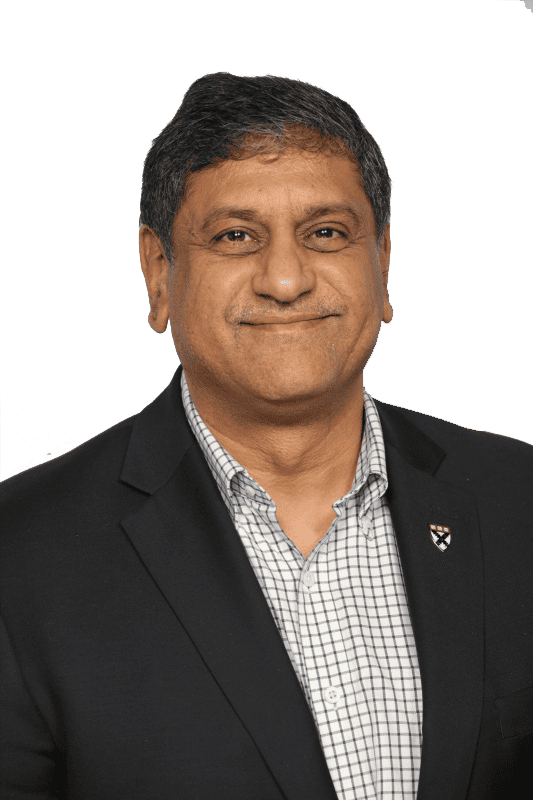
Rohit Mahajan is an entrepreneur and a leader in the information technology and software industry. His focus lies in the field of artificial intelligence and digital transformation. He has also written a book on Quantum Care, A Deep Dive into AI for Health Delivery and Research that has been published and has been trending #1 in several categories on Amazon.
Rohit is skilled in business and IT strategy, M&A, Sales & Marketing and Global Delivery. He holds a bachelor’s degree in Electronics and Communications Engineering, is a Wharton School Fellow and a graduate from the Harvard Business School.
Rohit is the CEO of Damo, Managing Partner and CEO of BigRio, the President at Citadel Discovery, Advisor at CarTwin, Managing Partner at C2R Tech, and Founder at BetterLungs. He has previously also worked with IBM and Wipro. He completed his executive education programs in AI in Business and Healthcare from MIT Sloan, MIT CSAIL and Harvard School of Public Health. He has completed the Global Healthcare Leaders Program from Harvard Medical School.

Ritu M. Uberoy has over twenty-five years of experience in the software and information technology industry in the United States and in India. She established Saviance Technologies in India and has been involved in the delivery of several successful software projects and products to clients in various industry segments.
Ritu completed AI for Health Care: Concepts and Applications from the Harvard T.H. Chan School of Public Health and Applied Generative AI for Digital Transformation from MIT Professional Education. She has successfully taught Gen AI concepts in a classroom setting in Houston and in workshop settings to C-Suite leaders in Boston and Cleveland. She attended HIMSS in March 2024 at Orlando and the Imagination in Action AI Summit at MIT in April 2024. She is also responsible for the GenAI Center of Excellence at BigRio and DigiMTM Digital Maturity Model and Assessment at Damo.
Ritu earned her Bachelor’s degree in Computer Science from Delhi Institute of Technology (now NSIT) and a Master’s degree in Computer Science from Santa Clara University in California. She has participated in the Fellow’s program at The Wharton School, University of Pennsylvania.
About the Legend
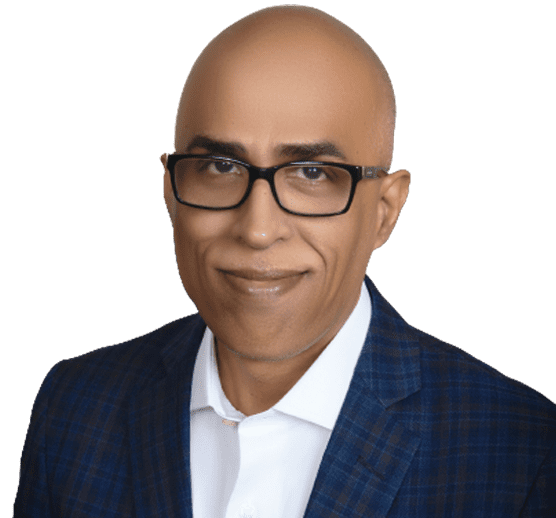
Paddy was the co-author of Healthcare Digital Transformation – How Consumerism, Technology and Pandemic are Accelerating the Future (Taylor & Francis, Aug 2020), along with Edward W. Marx. Paddy was also the author of the best-selling book The Big Unlock – Harnessing Data and Growing Digital Health Businesses in a Value-based Care Era (Archway Publishing, 2017). He was the host of the highly subscribed The Big Unlock podcast on digital transformation in healthcare featuring C-level executives from the healthcare and technology sectors. He was widely published and had a by-lined column in CIO Magazine and other respected industry publications.

